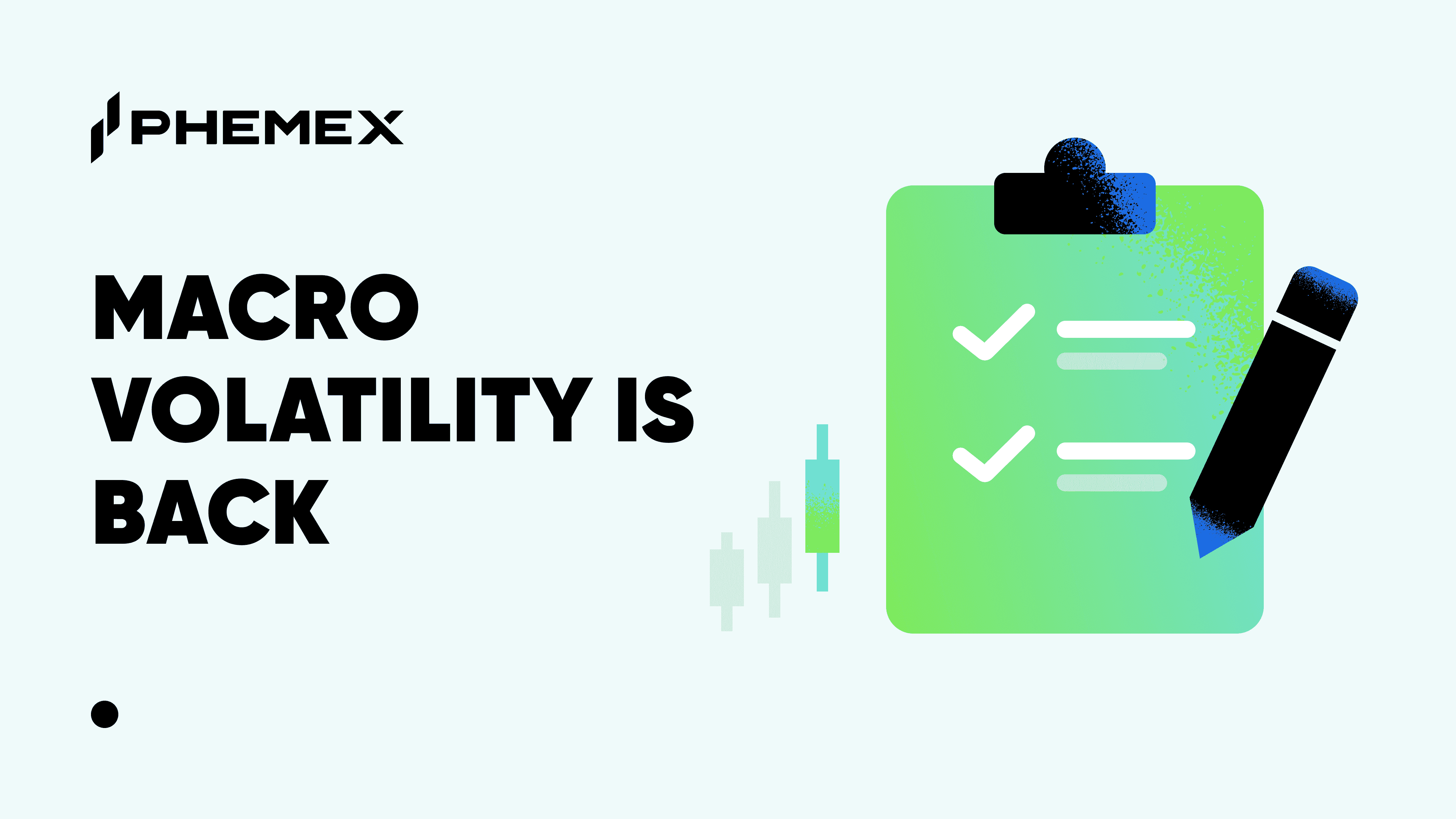
When Satoshi Nakamoto published the Bitcoin Whitepaper 15 years ago, he proposed it as an alternative currency for the information age that would not be subject to the whims of a centralized government and consequently not suffer certain setbacks that may beset fiat currencies. One of the most prominent advantages that many crypto proponents tout is the hedge against inflation. Certain cryptocurrencies like Bitcoin have a pre-programmed maximum supply (in Bitcoin’s case, it’s 21 million BTC). This means that once the total supply is in circulation, there is no way to add additional Bitcoin into the marketplace and therefore the value of BTC cannot be diluted through inflation. This is definitely one of the most unique aspects of Bitcoin and other fixed supply cryptocurrencies that set them apart from fiat currencies like the US dollar. However, further analysis is warranted to investigate what the relationship between cryptocurrency and inflation could mean for the future of Web 3.
What is Inflation?
Inflation is simply an increase in prices for different goods and services, and it’s usually an aggregate metric that encompasses the entire economy. When inflation occurs in an economy, its currency’s purchasing power declines. Traditionally, there are multiple drivers of inflation:
- Demand-Pull Inflation: When consumers and businesses are willing to spend more in order to buy the same thing, prices will naturally rise via free market forces.
- Cost-Push Inflation: Sometimes, prices of goods are forced upward because the costs of production have increased. These may include wages and raw materials. Often demand-pull and cost-push inflation complement one another, resulting in a positive loop of ever-increasing prices.
- Monetary Policy: If an economy has a governing body that controls the money supply, such as a central bank, then that institution can influence inflation rates by increasing the money supply or lowering interest rates. These actions would spur demand, and lead to higher prices across the economy.

In any traditional economy over a long period of time, inflation has always occurred. This is especially true after major economies moved away from the gold standard, in which value of currency was pegged to gold, a finite commodity. Fiat currencies do not have any explicit supply limitations, so over time the money supply will rise and prices will do so as well. In the United States, an average cup of coffee that used to cost $3.14 in 1980 now costs $5.89 in 2023.
It’s important to also note that inflation is not necessarily a bad thing. Most economists believe that moderate and consistent inflation levels signify a healthy economy, because rising prices encourage spending and stimulate economic growth. However, rapid and volatile inflation is detrimental because it causes citizens to lose purchasing power rapidly, thereby lowering their standard of living.
Can Crypto Coin Inflation Occur
Cryptocurrencies are often touted as a hedge against inflation in the real economy. Bitcoin is nicknamed “digital gold” because of its perceived ability to act as a stable store of value. However, crypto comes in all types and not all of them are immune to inflation. Certain blockchain networks will experience coin inflation.
Inflationary cryptocurrencies rise in supply over time. One of the most well-known cases of this is Dogecoin, which has no inherent supply limit after its previous hard cap of 100 billion DOGE was abolished in 2014. On the other hand, certain crypto networks are inherently deflationary. This means that a portion of the token’s supply is automatically burned after a predetermined period of time. The upcoming Phemex Token has such a mechanism in place, as the Phemex platform plans to use 0.01% of its daily contract trading revenue to buy back staked PT and provide revenue-sharing to PT stakers.
Based on these structures of inflationary and deflationary cryptocurrencies, some of the major networks feature a mixture of both. Bitcoin has a hard cap of 21 million BTC, but because currently the entire supply is not yet circulating, the network continues to push new coins out in the form of mining rewards. As BTC supply continues to increase, the Bitcoin network is currently inflationary, but it also boasts deflationary measures that slow down the release of new coins. For example, the “halvening” is a mechanism that occurs every 4 years and is programmed into the Bitcoin network to halve the rate at which mining rewards are distributed. This means that Bitcoin inflation will continuously slow down until its entire supply is in circulation, at which time Bitcoin inflation will case altogether.

Ethereum was previously a fully inflationary coin with no supply cap, but it implemented EIP-1559 in August 2021, which burns tokens instead of delivering them to miners. Burn rates have briefly made the coin deflationary during times of strong network activity. The narrative for ETH as a deflationary currency gained steam in 2022 after The Merge, which saw Ethereum transition into a proof-of-stake network. When network usage is high, more tokens are burned.
Ripple also contains some deflationary dynamics, with the XRP token being burned to pay for transactions. However, Ripple, the company that administers XRP, put tens of billions of XRP in escrow in 2017 to prevent a market dump. It releases them into the market on a regular basis, boosting the circulating supply. At the current rate of release, the daily distributed supply would take roughly 20 years to completely burn.
How do Cryptocurrencies React to Real Economic Inflation
Many major economies in 2023 are experiencing high rates of inflation. To combat this, central banks like the United States Federal Reserve have hiked up interest rates in an effort to tighten the money supply. In this current high rate, high inflation environment, cryptocurrencies have fallen under the microscope as a potential inflation hedge.
Bitcoin is not necessarily inflation-proof, but it can be considered “inflation-resistant” due to the following factors:
- Scarce Supply - As mentioned, once the entire 21 million BTC total supply is in circulation, there will be no more Bitcoin inflation. Over time, there may be deflation due to coins becoming lost and unrecoverable
- Independent Currency - Founded on the principle of decentralization, Bitcoin is not tied to any country or existing currency. Since crypto markets are open 24/7 to anyone with an internet connection, it’s a global asset class that is relatively decoupled from geographic risk.
- Easy to Transfer - Compared to gold, the other major inflation-resistant asset, Bitcoin is much more portable and transferable because it exists on blockchain networks and does not need to be physically traded.
Despite prevailing wisdom that Bitcoin boasts inflation-resistant characteristics, the empirical data may show something quite surprising. Throughout the first decade of Bitcoin’s existence, there has actually not been a significant correlation between BTC price and CPI (Consumer Price Index) movements. And if there is any correlation, it has mostly been negative, meaning that Bitcoin price falls when CPI rises. The same trend can be observed for cryptocurrencies in general. One potential reason for this is because when inflation rises, citizens have less disposable income to spend on relatively high-risk investments like crypto. They may prioritize their dwindling purchasing power on necessities and inelastic goods.

An obvious instance in which Bitcoin price correlated strongly with inflation is during the mid-2020 to late 2021 cryptocurrency bull run. During this period, crypto markets soared to new heights while the real economy underwent massive monetary inflation. In the United States, the federal government sent citizens stimulus checks of $1200 during the COVID-19 lockdowns. This caused a boom in the economy’s money supply, leading to rising prices. As the money printer roared, the crypto markets rose in tandem with many other asset classes such as stocks. When the Federal Reserve initiated interest rates spikes to combat inflation, crypto prices fell alongside stocks and other traditional investment vehicles. Therefore, some have concluded that cryptocurrency should be considered a monetary inflation hedge, but not necessarily a hedge against demand-pull or cost-push inflation.

Will the Dollar Collapse and is Crypto a Hedge Against It
As the global economy enters a relative downturn, superfluous fears have gained traction around the health of the U.S. dollar. Since cryptocurrencies are recognized as a digital alternative to fiat currencies, some wonder whether crypto may be a good investment to offset a doomsday scenario of the dollar collapsing.
While this article does not provide financial advice and individual research is always recommended, it’s likely far-fetched to believe that the U.S.dollar is on the way towards imminent collapse. In fact, while the U.S. economy has seen historical inflation levels over the past two years, the dollar has actually gained in strength relative to most other major fiat currencies.
Although Bitcoin is unlikely to dethrone the big centralized currencies in the short-term, it has significantly altered the global financial environment since its creation. Blockchain technology has led to the rise of decentralized finance (DeFi) and benefited the unbanked in poor or remote regions. Therefore, cryptocurrency should still be considered as a potential investment option to combat inflation and recession in the traditional economy.
Read More
- What is Inflation in Crypto?
- Is Bitcoin A Strong Investment Instrument Against Inflation?
- Inflation vs Deflation: What Are They and How Do They Differ?
- What Is Stagflation in Crypto?
- What Is Stagflation? Crypto Investing Strategies In A Stagflation
- Why Does Bitcoin Have Value?
- Global Macro and Microeconomic Trends in 2024
- What is Cryptocurrency & How It Differs From Digital Cash










